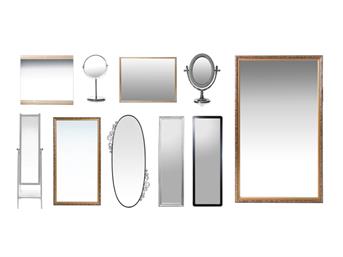PDF chapter test TRY NOW
You have studied in your lower classes how the light is reflected by the polished surfaces such as plane mirrors. This reflecting property of light is applied to various devices that we use in our daily life.
In this lesson, you will study types of mirrors like spherical mirrors and parabolic mirrors. You will also study the laws of reflection and the laws of refraction, and some of the optical instruments, such as periscope and kaleidoscope.
Mirrors:
Mirrors are utilised in our day to day life for various purposes. Mainly, we use them for beautifying us.
It is an optical device that contains a polished surface that reflects the light falling on it.
A conventional mirror is a glass sheet coated with aluminium or silver on one side to form an image.
Mirrors have a plane or curved surface. Curved mirrors have surfaces in different shapes that are spherical, cylindrical, parabolic and ellipsoid. The type of image is determined by the shape of a mirror. Plane mirrors form the perfect image of an object. In comparison, curved mirrors produce images that are either enlarged or diminished.

Mirrors
Note: In the 16th century in Venice, Italy, the method of coating a glass plate with a thin layer of reflecting metals was in practice. They used an amalgam of tin and mercury for this purpose. Nowadays, a thin layer of molten aluminium or silver is used for coating glass plates that will then become mirrors.
